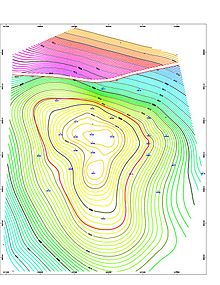
Back خزان النفط Arabic Trampa de petroli Catalan Ropné naleziště Czech Hidrokarbona naturrezervujo Esperanto Yacimiento petrolífero Spanish Nafta- ja gaasimaardla Estonian Petrolio-hobi Basque مخزن نفتی Persian Xacemento petrolífero Galician Jebakan minyak ID

A petroleum reservoir or oil and gas reservoir is a subsurface accumulation of hydrocarbons contained in porous or fractured rock formations. Such reservoirs form when kerogen (ancient plant matter) is created in surrounding rock by the presence of high heat and pressure in the Earth's crust.
Reservoirs are broadly classified as conventional and unconventional reservoirs. In conventional reservoirs, the naturally occurring hydrocarbons, such as crude oil (petroleum) or natural gas, are trapped by overlying rock formations with lower permeability, while in unconventional reservoirs the rocks have high porosity and low permeability, which keeps the hydrocarbons trapped in place, therefore not requiring a cap rock. Reservoirs are found using hydrocarbon exploration methods.
© MMXXIII Rich X Search. We shall prevail. All rights reserved. Rich X Search